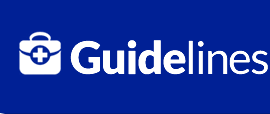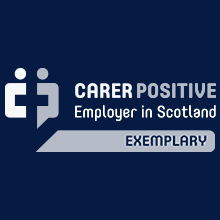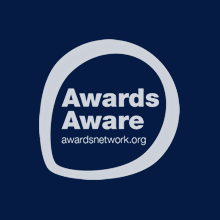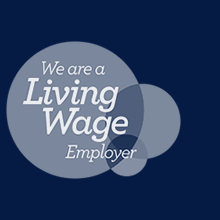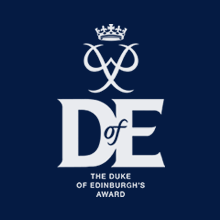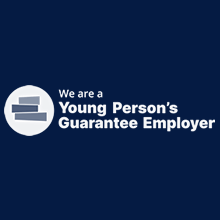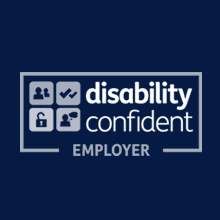Information
As part of the Oral Health Service (OHS), the Orthodontic Department provides specialist treatment for children and adults with significant malocclusion whose needs cannot be managed by their General Dental Practitioner (GDP) or specialist in primary care.
Depending on the needs of the patient, the Orthodontic Department can offer the following (please ensure to clearly state which of these you would like us to provide as this will streamline the referral process):
- Advice
- Treatment planning for the referrer
- Treatment within the department
- Second opinions for practitioners, or as requested by Practitioner Services Division (PSD)
Please note that ALL referrals MUST have orthodontic style clinical photographs/images of intra-oral scans attached. As a minimum this should be intra-oral frontal, right and left buccal, and upper and lower occlusal views. The dentition and gingival architecture should be clearly visible. In addition, it is highly recommended to attach an orthopantogram radiograph. This will facilitate appropriate vetting of the referral. (Due to file size restrictions, it may be required to compress photographs).
The Orthodontic Department has clinics based at the Edinburgh Dental Institute (EDI). Patients meeting our acceptance criteria are allocated to clinics based on the severity of their problem and / or treatment needs. A certain number of less significant cases may be accepted each year for training purposes.
Depending on the complexity of the malocclusion, the patient may be allocated to an orthodontic therapist, a specialist registrar trainee, or a consultant.
Please inform your patients that not all patients accepted for consultation will be offered treatment in the EDI, and there are waiting lists for both assessment and treatment, which may be significant in length. Current waiting times for new patient assessments are available on the NHS Lothian internet page and can be viewed: https://www.nhslothian.scot/yourrights/health-rights-waiting-times/nhs-lothian-outpatient-waiting-times/
As an NHS Hospital Dental Service (secondary care), orthodontic treatment provided by the EDI is free of charge for patients, however ongoing retainer care is not provided.
CR, JS & DM 27/11/25
Who can refer:
Referrals to the Orthodontic department are accepted from General Dental Practitioners (GDPs), Specialist Practitioners and other primary and secondary health, education and social care professionals.
Who to refer:
The Orthodontic Department accepts referrals for patients with a significant malocclusion and ‘great need’ for orthodontic treatment, as defined by the Index of Orthodontic Treatment Need (IOTN) and the Index of Orthognathic Functional Treatment Need (IOFTN). Patients who have an orthodontic need but do not meet the following acceptance criteria should be referred to a specialist orthodontist in the primary care setting
(Please state if you are requesting advice, second opinion, planning or treatment)
- Significant skeletal discrepancy requiring orthognathic surgery or multi-disciplinary management of dentofacial trauma.
*Please note that we are currently unable to accept new referrals for the orthognathic surgery pathway. In the meantime, if you feel a camouflage or limited outcome option may be available and wish for advice, we can provide a suggested plan from analysis of the records provided (if appropriate) and return the patient to you.
- Hypodontia cases with more than 1 developmentally missing tooth in any quadrant (please see next section regarding cases with only 1 developmentally missing tooth in any quadrant)
- Complex cases involving bilateral ectopic and impacted canines, and other ectopic and impacted teeth (please see next section regarding unilateral canines and other exceptions)
- Complex cases with malocclusion combined with dental anomalies, mixed dentition problems or dental trauma requiring orthodontic input as part of multi-disciplinary treatment. If the subsequent definitive orthodontic treatment is suitable for primary care, the patient may be returned for this. (Depending on age, please consider referral via SCI Gateway to the Paediatric Dental Service or Restorative Dentistry in the 1st instance for dental anomalies, mixed dentition problems or dental trauma not requiring orthodontic input, ensuring your referral meets their acceptance criteria)
- Cleft lip and palate, cleft palate requiring multi-disciplinary management, or craniofacial anomalies/syndromes requiring multidisciplinary management
- Growth related conditions or syndromes leading to malocclusion
- Patients with a medical condition(s) or additional support needs that may benefit from orthodontic treatment that is not suitable for primary care
- Advice or second opinions for practitioners, or as requested by Practitioner Services Division (PSD)
- Transfer cases from UK secondary care providers due to a patient relocating (with records, and appropriate funding agreed. (Please see next section for transfer cases from primary care).
- Cases that may benefit from early class III management at the appropriate age using protraction facemask or similar mechanics with or without maxillary expansion (Please note that if the future definitive orthodontic treatment is suitable for primary care the patient may be returned to you for that stage)
- Appliances for sleep apnoea patients (usually requested by the relevant respiratory/sleep service managing the patient and have appropriate funding agreed).
Who not to refer:
The Orthodontic Department will not accept referrals for the following:
Incomplete referral
- Referrals without clinical photographs/images of intra-oral scans will automatically be rejected. In addition, it is highly recommended that an orthopantogram is attached.
- Referrals with inadequate medical/social history information
- Referrals with insufficient clinical information provided
- Referrals for second opinion requests from Practitioner Services Division (PSD) without all correspondence between the referrer and PSD will be rejected.
Demographics
- Patients outside of Lothian health board will not be accepted
Index of Treatment Need (IOTN) Dental Health Component criteria
- Cases with an IOTN score of less than 4 will not be accepted. Cases which meet IOTN 4 and 5 thresholds based solely on overjet (4a/5a), reverse overjet (4b/4m/5m), crossbites (4c), crowding (4d) or increased overbites (4f) will not routinely be accepted for treatment unless the treatment involves orthognathic surgery or has a significant complicating factor(s).
- Unilateral unerupted canine cases that are favourable for alignment, with no significant root resorption of adjacent teeth and no other significant complicating factor elsewhere in the mouth, will not routinely be accepted for orthodontic treatment. Please liaise directly with the relevant surgical speciality with a clear plan and then carry out the orthodontic treatment in practice.
- Unilateral or bilateral unerupted canine cases, or cases with other types of unerupted teeth, that will be treated by removal of the unerupted teeth will not routinely be accepted for orthodontic treatment unless there is another significant complicating factor. Please liaise directly with the relevant surgical speciality with a clear plan and then carry out the orthodontic treatment in practice.
GDPs who do not provide orthodontic treatment should refer such cases to a specialist orthodontic practice. If, as a provider of orthodontic services, you would like advice, or a suggested orthodontic plan or a CBCT for these cases please refer stating that. The patient will be returned to you with any requested advice, plan or CBCT files/report, at which point you can liaise directly with the relevant surgical speciality and then carry out the orthodontic treatment in practice. Please note that it is essential to clearly state you are asking for either advice, a suggested plan or CBCT and that you intend to take on the orthodontic treatment (assuming the CBCT does not reveal any significant root resorption or other significant complicating factor).
- Cases with only one developmentally missing tooth in any quadrant (4h) will not routinely be accepted for either the orthodontic or restorative treatment regardless of whether the case is space opening or space closing. If you would like advice or planning for IOTN 4h cases, please refer stating that, after which the patient would be returned with any requested advice or suggested plan, for both the orthodontic and restorative parts to be delivered in primary care. Please note that it is essential to clearly state you are asking for either advice or a suggested plan and that you intend to take on the orthodontic treatment.
- Thumb sucking interventions will not usually be provided
- TMD management will not be provided
Interceptive extractions
- Orthodontic specialists referring patients should ensure that any appropriate interceptive primary tooth extractions have been undertaken, and subsequent review of the erupting permanent tooth, before referral.
Compromised/limited outcome objectives
- Any cases involving compromised/limited outcome objectives that do not significantly reduce the Peer Assessment Rating (PAR) score due to either the condition of the dentition or patient preference, will not usually be accepted for treatment and will be returned with a suggested plan were appropriate. This includes patients who would otherwise be an orthognathic case.
Dental and periodontal health
- Patients with caries, gingivitis, active periodontal disease, poor oral hygiene or an extensively restored dentition will not be routinely accepted. Please ensure all stabilisation/restorative work is performed before referral.
Retainers
- We do not accept referrals for any type of retainers, whether it’s provision, maintenance or repairs, including vacuum formed retainers or bonded retainers. This should be carried out routinely in primary care with the GDP or specialist orthodontist at the patient’s own cost.
- Treatment for relapse due to lack of compliance will not be provided.
Complex medical problems/additional support needs
- Patients with additional medical and support needs are required to meet the above acceptance criteria and are not automatically accepted for orthodontic treatment within the hospital service on the basis of their additional needs alone, however, this is case dependent and patients may be referred for consideration, and if suitable for specialist practice will be returned with a suggested plan if requested.
Extractions requested as part of orthodontic treatment to be delivered in practice
- If extractions are required under sedation/GA as part of orthodontic treatment to be delivered in practice, please liaise directly with the paediatric/oral surgery departments for consideration of extractions, after which the patient will return to you for any orthodontic treatment. Please provide details of your orthodontic plan, and relevant radiographs, to the paediatric/oral surgery department and check that your referral meets their acceptance criteria.
Transfer cases
- Transfer cases/in-treatment cases from primary care providers will not routinely be accepted for treatment, however may be referred for advice/second opinion and must have all records included.
How to refer:
Referrals to the Orthodontic department are accepted from primary and secondary health, education and social care professionals. Patients who have an orthodontic need but do not meet the above acceptance criteria should be referred to a specialist orthodontist in the primary care setting.
- GDPs providing NHS dentistry must refer to Orthodontics via SCI Gateway. Any other route of referral will be rejected.
- If you are a primary / secondary care health professional without access to SCI Gateway, please download, complete and send the referral form.
- Please note that the secure transmission of emails containing patient information is the referrer’s responsibility
Referrals should be completed as fully as possible, with poorly completed forms risking rejection. Referrals should include the following information:
- Patient demographics
- Reason for referral (e.g. for advice / second opinion/planning/treatment)
- Clinical summary of the patient’s malocclusion
- History of any previous treatment
- Details of patient’s GDP if referred from Specialist Practice
- ALL referrals must have orthodontic style photographs/images of intra-oral scans attached. As a minimum this should be intra-oral frontal, right and left buccal, and upper and lower occlusal views. The dentition and gingival architecture should be clearly visible. In addition, it is highly recommended to attach an orthopantogram radiograph.
These can be sent as an ‘attachment’ in SCI Gateway (maximum file size of 2MB, with a total attachment capacity of 5MB). If you are not registered with SCI Gateway, have images exceeding the file size or have relevant non digital images, please use an alternative option for the transfer of images.
Please note that it remains the responsibility of the referrer to provide or secure any necessary treatment or advice in relation to their patient’s orthodontic needs (including emergency / urgent care) until the patient is assessed by the Orthodontic Department. Subsequent to an assessment and/or treatment within our service, it remains the responsibility of the patient’s primary care dental provider to provide or secure all routine dental care (including emergency/urgent care).
Discharge criteria
Patients will be discharged from the care of the Orthodontic Department for the following reasons:
- Treatment completed and retention monitored for 6 months post completion.
After discharge from the orthodontic department, if the patient is wearing a removeable retainer, they will be advised to continue wearing this at night for as long as they wish their teeth to remain straight (usually lifelong). They will be discharged to their GDP with the advice that their GDP or specialist orthodontist will provide them with new retainers and this will incur an ongoing cost to the patient.
- Treatment completed and patient referred for continuing treatment with another department.
- Lack of co-operation during treatment e.g. failure to attend or poor oral health.
